By 2026, global VoIP traffic is expected to exceed 200 billion minutes per month, reflecting a massive shift towards SIP trunking for business communications. This surge comes amid rapid digital transformation and expanding hybrid workforces demanding flexible, secure voice infrastructure. At the same time, legacy telephony systems are aging and losing support, exposing businesses to operational risks.
SIP trunking isn’t just a communication tool, it’s a strategic infrastructure choice. It consolidates voice and data over a single IP connection, offering agility and cost benefits. However, increased reliance on internet-based voice raises security concerns rarely addressed in traditional telephony. Threats like toll fraud, eavesdropping, and denial-of-service attacks demand robust SIP trunk security measures.
This article explores how SIP trunking compares to traditional telephony in security, highlighting real-world risks and mitigation strategies. Later sections provide data-backed insights and case studies that clarify how organizations can protect their voice infrastructure while reaping SIP’s advantages. Understanding these factors is critical to making informed, future-proof communication decisions.
Key Takeaways
- SIP trunking consolidates voice and data over IP, offering lower costs (up to 40% savings), fast deployment (2–5 days), and seamless scalability, ideal for remote and hybrid teams.
- Security risks like toll fraud, DoS attacks, and eavesdropping are rising with VoIP growth; businesses must implement SIP-specific defenses like SRTP, firewalls, fraud detection, and multi-provider failover.
- SIP enables disaster recovery, real-time analytics, and UCaaS integration, while traditional telephony offers simpler, power-independent service still vital for hospitals, emergency systems, and high-compliance environments.
- Legacy PSTN and ISDN systems are being phased out globally; choosing SIP now ensures future-proof infrastructure, centralized management, and compatibility with platforms like Teams and Zoom Phone.
- A structured SIP readiness plan, auditing current usage, evaluating bandwidth, and selecting providers with SLAs, PoPs, QoS, and fraud protection, is essential for secure, strategic deployment.
What SIP Trunking and Traditional Telephony Really Are
Understanding the core of SIP trunking and traditional telephony helps clear the confusion clouding modern communication decisions. Both serve as foundational infrastructure, but their architecture and capabilities differ greatly. Before diving deeper, it’s important to grasp how each technology operates, and why that matters for business communication, security, and scalability.
SIP Trunking, Explained Without Fluff
SIP trunking uses the Session Initiation Protocol (SIP) to link an organization’s IP-based private branch exchange (IP PBX) to the public switched telephone network (PSTN) via the internet. It replaces traditional physical telephone lines with virtual “trunks” running over a single data connection. This consolidates voice and data traffic into one pipeline, reducing hardware complexity and costs.
This method fits perfectly with modern Unified Communications as a Service (UCaaS) platforms and SD-WAN networks, offering seamless integration and improved management. It supports softphones, mobile apps, and cloud-based calling, delivering flexibility for remote or hybrid teams.
For visual learners, diagrams illustrating SIP trunk architecture can clarify the flow of data and voice signals over IP networks, highlighting the simplicity and efficiency compared to legacy systems.
Traditional Telephony: Legacy Infrastructure Still in Play
Traditional telephony, rooted in analog and circuit-switched networks like the PSTN, relies heavily on physical hardware: copper wires, circuit boards, and dedicated lines. Calls establish a dedicated circuit for their duration, ensuring consistent connection quality but limiting flexibility.
Despite digital trends, legacy systems like ISDN (Integrated Services Digital Network) and PRI (Primary Rate Interface) lines remain active, especially in rural locations, regulated sectors, or facilities needing power-independent communication. These setups offer reliability where internet connectivity may falter or strict compliance requirements exist.
Legacy telephony’s dependence on physical infrastructure makes upgrades costly and scaling slower, but its robustness still meets niche needs where modern IP systems might face challenges.
The Real Differences That Impact Business Outcomes
Choosing between SIP trunking and traditional telephony goes beyond technology preferences. It directly affects costs, deployment speed, scalability, resilience, and compliance, factors shaping long-term business performance. Understanding how these systems influence operational and financial outcomes helps organizations make strategic decisions.
Below, we explore key areas where SIP trunking and legacy telephony diverge, with practical insights to guide your evaluation.
Cost Modeling: Predictable Bills vs Scalable Savings
| Cost Factor | Traditional Telephony | SIP Trunking |
| Capital Expenditure | High (hardware, lines) | Low (mostly subscription-based) |
| Operational Expenditure | Moderate to high (maintenance, call charges) | Lower (minimal hardware, bundled calls) |
| Call Charges | Higher, especially international | Significantly lower globally |
| Maintenance | Regular on-site support needed | Remote management reduces costs |
Traditional lines carry upfront hardware investments and maintenance fees. SIP channels, priced per concurrent call, eliminate physical infrastructure costs. Long-distance calls cost far less on SIP, slashing international expenses. Studies show businesses cut telephony expenses by up to 40% switching to SIP.
Infrastructure Demands and Deployment Speed
SIP trunking deploys in days, leveraging existing internet connections and IP PBX setups. It requires network readiness—stable LAN/WAN with adequate bandwidth and QoS settings.
PSTN upgrades or new installations involve physical line provisioning, site visits, and hardware setup, often stretching weeks or months. Legacy systems demand more hands-on labor and infrastructure modifications, slowing adaptation to changing needs.
Scalability and Geographic Flexibility
SIP trunks allow near-instant provisioning or removal of channels remotely. Adding capacity doesn’t require new physical lines, enabling flexible scaling aligned with business growth or seasonal demand.
Traditional telephony ties channels to specific locations via copper or fiber lines. Expanding capacity involves costly and slow physical installations. Geographic flexibility suffers when moving or adding sites.
Resilience and Disaster Recovery
SIP supports sophisticated disaster recovery via cloud failover, multiple Points of Presence (PoPs), and dynamic call routing. If one route fails, traffic reroutes instantly to avoid downtime.
PSTN lines, while reliable, have single points of failure, damaged copper lines or hardware can interrupt service until repaired. DR options usually involve redundant physical lines, increasing costs and complexity.
Regulatory and Compliance Considerations
Both systems support standards like HIPAA and PCI-DSS, but SIP requires stricter security protocols (encryption, secure authentication) to meet compliance.
Lawful intercept differs: traditional lines offer built-in capabilities, while SIP providers implement intercept via software and network controls.
Emergency calling support (e.g., 911, 112) varies; SIP solutions depend on accurate user location data, sometimes complicating compliance. Legacy systems provide fixed-location accuracy by default.
Each of these factors shapes how communication infrastructure supports business agility, security, and cost management. The next sections break down these impacts further, helping you align technology choices with organizational goals.
SIP Trunking: Data-Driven Advantages
Making a switch to SIP trunking often hinges on measurable business gains. Beyond cost savings, it empowers workforce flexibility and streamlines management. Data-driven benefits create compelling reasons for adoption and help justify investment.
Let’s explore key advantages backed by real-world metrics and business outcomes.
ROI Benchmarks
Companies adopting SIP trunking typically see return on investment within 6 to 12 months. This rapid payback comes from lower call costs, reduced maintenance, and less need for physical hardware.
Over a 3–5 year period, total cost of ownership falls substantially compared to traditional telephony. Lower capital expenditures and operational expenses compound savings. Industry reports from Forrester indicate average telecom spending shrinks by 30–40% post-transition.
Unified Communications + Remote Workforce Enablement
SIP trunks integrate seamlessly with UCaaS platforms like Microsoft Teams and Zoom Phone. This connection supports remote work by enabling softphones and bring-your-own-device (BYOD) policies.
Teams stay connected anywhere without geographic limits. Flexibility improves collaboration and responsiveness, crucial for distributed or hybrid workforces. Users enjoy consistent, high-quality communication without reliance on physical phone lines.
Centralized Management and Analytics
SIP offers centralized portals that provide real-time dashboards, call quality monitoring, and detailed analytics. IT teams gain control over provisioning, call routing, and troubleshooting from a single interface.
Legacy telephony often relies on vendor ticketing systems that slow issue resolution and obscure usage insights. SIP’s transparent, data-rich environment speeds decision-making and drives continuous improvement.
These data-backed advantages highlight why SIP trunking delivers more than cost savings—it builds a flexible, manageable, and future-ready voice infrastructure.
Where Traditional Telephony Still Wins
Despite the rapid rise of SIP trunking, traditional telephony remains relevant in specific scenarios. Certain environments depend on the simplicity and reliability of legacy systems. Understanding where traditional lines outperform helps organizations plan for uninterrupted communication.
Let’s look at key areas where traditional telephony retains a clear advantage.
Resilience Without Power or Internet
Plain Old Telephone Service (POTS) lines operate independently from internet and local power supplies. They continue working during outages, making them indispensable for emergency systems and backup communication.
Hospitals, fire stations, and security setups rely on this inherent resilience to maintain contact when digital infrastructure fails. This reliability can’t be matched by SIP trunks, which depend on network and power availability.
Minimal Configuration, Universal Compatibility
Analog phones connect instantly to traditional lines without complex setup. They require no software, authentication, or network configuration—just plug and play.
Government offices, elderly care facilities, and industrial sites appreciate this simplicity. In sectors where ease of use and low maintenance are priorities, traditional telephony offers a straightforward, proven solution that avoids technical hurdles.
Traditional telephony’s strengths in reliability and simplicity explain why it continues to serve critical functions even as voice technology evolves.
Disadvantages Often Overlooked
Every communication system has its drawbacks, even when it seems like the best fit. SIP trunking offers many advantages, but it comes with challenges that often catch businesses off guard. Likewise, traditional telephony brings reliability but carries risks that can limit future growth.
Understanding these hidden weaknesses helps avoid costly surprises and supports smarter infrastructure decisions.
SIP: Not a Silver Bullet
SIP trunks rely heavily on sufficient bandwidth and stable internet connections. Network issues like jitter and latency can degrade call quality, affecting conversations and business operations. Managing firewalls and security policies adds complexity that can slow deployment.
Fax transmissions pose a challenge, even with T.38 protocol support, as reliability varies. Emergency services face limitations too — accurate caller location data isn’t always guaranteed, complicating 911/112 calls.
Traditional Telephony: Inflexibility = Long-Term Risk
Copper-based lines degrade over time, and many providers plan to retire their PSTN infrastructure. Support is dwindling, making maintenance harder and costlier.
Scaling traditional telephony proves expensive. Physical lines tie communication to fixed locations, restricting growth and adaptability. These limitations introduce financial and operational risks businesses can’t ignore.
Both systems present trade-offs that organizations must weigh carefully. Recognizing these drawbacks ensures infrastructure choices align with long-term strategy, not just immediate needs.
Choosing the Right System: A Business-Focused Framework
Selecting between SIP trunking and traditional telephony requires more than technical specs. It demands a clear view of business needs, growth plans, and risk tolerance. A strategic approach helps align communication infrastructure with long-term goals. Understanding communication patterns and choosing a reliable provider lays a strong foundation for success.
Evaluate Communication Patterns and Requirements
Start by assessing how your organization communicates today and plans to grow. Consider:
| Factor | Questions to Ask |
| Number of Sites | How many locations require voice services? |
| Remote Workers | What percentage of staff work remotely or hybrid? |
| Compliance Concerns | Which regulations apply (HIPAA, PCI-DSS, etc.)? |
| Expected Growth | What’s the projected increase in users or sites? |
| Call Volume & Type | Are calls mostly local, international, or toll-free? |
| Disaster Recovery Needs | How critical is uptime and failover capability? |
This checklist guides infrastructure choices to match real demands rather than assumptions.
What to Look for in a SIP Trunk Provider
Choosing a SIP trunk provider means focusing on reliability, security, and support. Look for:
- Service Level Agreements (SLAs): Clear uptime guarantees and penalties.
- 24/7 Support: Around-the-clock access to technical assistance.
- Point of Presence (PoP) Locations: Providers with PoPs near your sites reduce latency.
- Quality of Service (QoS) Guarantees: Ensures voice traffic gets priority on the network.
- Fraud Protection: Mechanisms to detect and prevent unauthorized call usage.
Beware of resellers who lack direct network control or transparency. Their limited oversight may cause service issues and delayed responses. Partner with providers who own or manage their infrastructure for better accountability and performance.
Taking a structured approach to evaluating needs and providers reduces risk and optimizes communication investments. The next section explores emerging voice infrastructure trends shaping the future.
What’s Next: The Future of Voice Infrastructure
Voice communication is evolving rapidly, driven by new technologies reshaping how businesses connect. AI-enabled routing now adapts call paths in real time, optimizing quality and reducing costs. SIP over 5G promises faster, more reliable connections, supporting mobile and remote users with minimal latency. Meanwhile, WebRTC bridges web browsers and phone networks, simplifying access and enabling richer communication experiences.
Several countries are preparing for the complete retirement of PSTN systems. The UK’s scheduled ISDN switch-off in 2025 marks a critical milestone, forcing organizations to migrate to IP-based voice solutions. This transition underlines the need to adopt future-ready infrastructure.
SIP forms the backbone of modern communication strategies. Its flexibility supports Unified Communications as a Service (UCaaS) and Contact Center as a Service (CCaaS), powering integrated platforms for voice, video, messaging, and analytics. Adopting SIP today positions businesses to leverage these innovations seamlessly, ensuring communications remain agile and scalable in the years ahead.
Conclusion – Infrastructure That Scales With You
Choosing the right voice infrastructure shapes how your business adapts to future demands. This decision goes beyond technology, it’s about building a foundation that grows with your organization. Flexible, cloud-ready systems offer agility and control, supporting evolving communication needs without constant reinvestment.
As legacy networks phase out, embracing modern options ensures uninterrupted service and access to emerging capabilities. Assess your current setup with a strategic lens, focusing on scalability, security, and user experience.
Take the next step by requesting a readiness consultation or cost assessment with didlogic. Understanding your infrastructure’s strengths and gaps prepares you for a seamless transition and sustained growth. The right voice infrastructure empowers your business to stay connected, competitive, and ready for what’s next.
Further Reading
- What is SIP trunking?
- SIP trunking capacity
- Differences between SIP trunking and cloud PBX
- Differences between SIP trunking and telephony
- Differences between SIP trunking and IP trunking
- SIP session vs SIP trunk
- Differences between SIP Trunking and Session Border Controllers
- SIP Trunking vs PSTN
- SIP Trunking vs H.323
- Advantages of SIP Trunking
- SIP Trunk Costs
- SIP Trunking Migration Plan
- SIP Trunking Requirements










